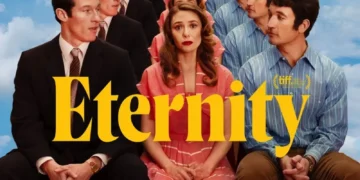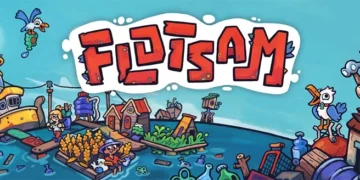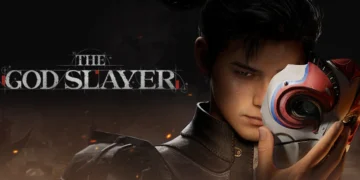Directed & Written by: Makoto Shinkai
Produced by: Genki Kawamura
Studio: CoMix Wave Films
Music: RADWIMPS
Distributed by: Toho
16 year old Hodaka has run away from his island home and has just made it to the city of Tokyo after what could have been a life ending ferry ride. He treats his savior to a meal and in return Hodaka accepts his business card. It isn’t long before Hodaka turns to this stranger for help in looking for work. A difficult task in Japan, as both the fact he is a run away, underage, lack of student ID and Japanese work laws have kept him from gaining any employment. Whilst Hodaka begins to enjoy his new life with his new house mates Keisuke and Natsumi, he cross paths again with a girl named Hina. Having saved her from what would have been a massive mistake, they both run and find themselves before a small shrine on top of an abandoned building. As thanks, Hina reveals herself to be a “Sunshine Girl”. Together they work towards making the most of her gifts, by making others smile by bringing out the sun and brighten up the Tokyo skyline, for just 3000Yen. However these gifts come at a great cost for Hina.

This was such an incredible film, and I am not surprised given that it was another Makoto Shinkai creation. Stepping back from the budding romance between the two main characters, Shinkai is also highlighting three very concerning topics – Climate change, Runaway youths and the ability to try and hold onto tradition in today’s modern society. Even in the opening scene we see a short but violent rainstorm that almost capsizes a ferry on the way into Tokyo. These showers only become more violent and prolonged as the movie goes on, until the rain just keeps falling for another three straight years after the main story. Throughout the film we get to see the wonderful and iconic sights of Tokyo, from Tokyo Tower to Takeshita street. All of which look like they have just been photographed, but instead have been animated. The level of creativity and animation in this film is astounding. The ending scenes really bring home the dangers the city of Tokyo will face with the effects of climate change. A danger that will affect more places around the World and we can even see it happening today, with Venice being the one the comes to mind first after their increased flooding in 2019.
Shinkai also uses characters that are all going through their own personal issues without revealing too many details on how they have gotten to be there at that point in time. For instance Hodaka ran away from his island home as he felt suffocated and also commented that he had not had a meal he enjoyed so much before (when he received the burger from Hina). We don’t learn any more on why he chose to leave home or in fact the welcome he received when he was forced to return. We can only guess that perhaps he lived in a violent home or his parents put too much stress on him to get straight A’s at school, leading him to run away. Hinas’ story is different, with no father around and her mother passed away, Hina dropped out of school and started applying for jobs with a fake date of birth in order to support both herself and her middle school brother. Hina stepped up to the plate, putting her teenage freedom aside and vowed to do all she could to keep her brother with her. Keisuke is another case, it isn’t until perhaps half way through the film do we see that he is a father and a widow. With his daughter living with her grandmother, Keisuke is seen as unfit to have custody over his child. All three characters have come from various backgrounds, but through their experiences they see the struggles that each of them are going through and they lend a helping hand. Keisuke offers his home and a job to Hodaka, where as Hodaka helps Hina earn some money from her talents.

Together the young pair create a website so that they can start taking requests. It doesn’t take long before the site takes off and they actually start earning money. Through superstition and old tales, we discover the origin of the Weather Maidan and her fate. From what I have learned about Japan over the years, they are renowned for their technological advances but they also have long standing traditions that they still adhere to today. For instance, shrines are mobbed with people for New Years, so they can return last years charms, purchase new ones, buy a fortune, bask in some holy incense and pray to the Gods for luck & good health in the coming year. There are also people that have a strong belief in Oni, Kitsune, lingering spirits and even Sunshine Girls. For me, believing in these ideas makes the World that bit more magical. There are few places I know of today that still carry on the same old traditions that their families began many, many generations ago. Perhaps that is one of the reasons I have become so fascinated with the culture in Japan. Shinkai is a master when it comes to showcasing the light, dark and other-worldly sides of his home country. I would even compare Makoto Shinkai to be the anime director equivalent to Takeshi Kitano.
It is only when all three of our characters meet in Tokyo do we start learning about their lives, with little knowledge of their pasts. Hodaka tries his best to survive in the big city, but soon realises his limited amount of money will not sustain him for long. Whatever happened back home, he is determined to never return and so he takes many beatings from local criminals as he sleeps in doorways to their clubs & runs for it whenever he is stopped by the police. He goes through so much in order to survive on his own, it’s only when he starts living with Keisuke, that he begins to enjoy his time in Tokyo. Hina works any job she can in order to sustain her life and keep her younger brother at her side. It was on the day of her mothers’ passing that she became a Sunshine Girl, after passing through the Torii Gate on an unusual shrine that was basked in sunlight on a rainy day. All of these characters have a difficult past, yet they still do all they can to move forward.

Makoto Shinkai is also the director behind Your Name, which won the 2018 Crunchyroll Anime Awards for Best Film and rightly so. In the film we meet two characters who go through a long distance, opposite gender, Freaky Friday switch. Although both were based in Japan, but the added twist was that it didn’t happen in the same time frame. Both characters Taki and Mitsuha appear in this film, after the events of their switch but just before they met once again on the iconic staircase scene. It is wonderful to see that both films are actually in the same universe and perhaps maybe his other films like 5 Centimeters Per Second and The Garden Of Words are also intertwined in the same Tokyo. It was a wonderful surprise to see both Taki and Mitsuha appear once more on screen.
The animation is flawless and absolutely captivating, even a simple scene where you are just watching raindrops falling on the streets held so much power. The music score is the best I have ever heard in an animated film! When I attended my local screening today, I was the last to leave as I just wanted to sit and listen to all the music being replayed during the credits. This is an album I would surely buy just so I could listen to the tracks over and over again. In fact practically every song that was used in the film was composed and performed by a Japanese rock band called Radwimps. They had previously worked with Skinkai before to score music for Your Name.

Weathering with You was produced by CoMix Wave Films Inc, an established Japanese animation company that was founded back in 2007. They had previously worked on many other Shinkai films including Your Name, 5 Centimeters Per Second and The Place Promised in Our Early Days. The level of crisp, clean, high definition animation reaches new heights with each new production. If you can make a screening of Weathering With You – then go! His films work best on the big screen, and who knows, perhaps this film will return once more during this years Japanese Film Festival in Ireland. I went into my screening fully expecting to watch the Japanese version and juggle my time reading the subtitles and enjoying the visuals. To my amazement though I got to watch the English Dub version, which I wasn’t even aware was out! Great voice cast, even though I only recognised one name, which was Barbara Goodson (Rita Replusa in Power Rangers) who was playing Fumi Tachibana – Taki’s grandmother. Which dub version have you watched and which performance did you prefer?
I want to give a massive shout out to Anime Limited, Japanese Film Festival Ireland and my local cinema for organising this viewing for people. It was well worth the trip out and I would go back again tomorrow if it was getting a second screening. This will definitely be a film well worth getting on BluRay. I wonder what Shinkai will be working on next?
Overall: 10/10

















